Novel microenvironment-based classification of intrahepatic cholangiocarcinoma with therapeutic implications
- PMID: 35584893
- PMCID: PMC10388405
- DOI: 10.1136/gutjnl-2021-326514
Novel microenvironment-based classification of intrahepatic cholangiocarcinoma with therapeutic implications
Abstract
Objective: The diversity of the tumour microenvironment (TME) of intrahepatic cholangiocarcinoma (iCCA) has not been comprehensively assessed. We aimed to generate a novel molecular iCCA classifier that incorporates elements of the stroma, tumour and immune microenvironment ('STIM' classification).
Design: We applied virtual deconvolution to transcriptomic data from ~900 iCCAs, enabling us to devise a novel classification by selecting for the most relevant TME components. Murine models were generated through hydrodynamic tail vein injection and compared with the human disease.
Results: iCCA is composed of five robust STIM classes encompassing both inflamed (35%) and non-inflamed profiles (65%). The inflamed classes, named immune classical (~10%) and inflammatory stroma (~25%), differ in oncogenic pathways and extent of desmoplasia, with the inflammatory stroma showing T cell exhaustion, abundant stroma and KRAS mutations (p<0.001). Analysis of cell-cell interactions highlights cancer-associated fibroblast subtypes as potential mediators of immune evasion. Among the non-inflamed classes, the desert-like class (~20%) harbours the lowest immune infiltration with abundant regulatory T cells (p<0.001), whereas the hepatic stem-like class (~35%) is enriched in 'M2-like' macrophages, mutations in IDH1/2 and BAP1, and FGFR2 fusions. The remaining class (tumour classical: ~10%) is defined by cell cycle pathways and poor prognosis. Comparative analysis unveils high similarity between a KRAS/p19 murine model and the inflammatory stroma class (p=0.02). The KRAS-SOS inhibitor, BI3406, sensitises a KRAS-mutant iCCA murine model to anti-PD1 therapy.
Conclusions: We describe a comprehensive TME-based stratification of iCCA. Cross-species analysis establishes murine models that align closely to human iCCA for the preclinical testing of combination strategies.
Keywords: cholangiocarcinoma; gene expression; immune response; immunotherapy; molecular biology.
© Author(s) (or their employer(s)) 2023. No commercial re-use. See rights and permissions. Published by BMJ.
Conflict of interest statement
Competing interests: JML is receiving research support from Bayer HealthCare Pharmaceuticals, Eisai Inc, Bristol-Myers Squibb, Boehringer-Ingelheim and Ipsen, and consulting fees from Eli Lilly, Bayer HealthCare Pharmaceuticals, Bristol-Myers Squibb, Eisai Inc, Celsion Corporation, Exelixis, Merck, Ipsen, Genentech, Roche, Glycotest, Nucleix, Sirtex, Mina Alpha Ltd and AstraZeneca. AV has received consulting fees from Genentech, Guidepoint, Fujifilm, Boehringer Ingelheim, FirstWord, and MHLife Sciences; advisory board fees from Exact Sciences, Nucleix, Gilead and NGM Pharmaceuticals; and research support from Eisai.
Figures
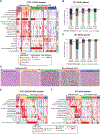
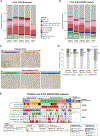

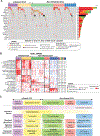
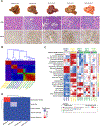

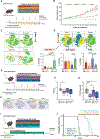
Comment in
-
Refining genetic and molecular classifications to facilitate breakthrough treatments in intrahepatic cholangiocarcinoma: are we there yet?Gut. 2023 Apr;72(4):608-610. doi: 10.1136/gutjnl-2022-327782. Epub 2022 Jun 30. Gut. 2023. PMID: 35772925 Free PMC article. No abstract available.
References
-
- Khan SA, Tavolari S, Brandi G. Cholangiocarcinoma: epidemiology and risk factors. Liver Int 2019;39 Suppl 1:19–31. - PubMed
-
- Makawita S K Abou-Alfa G, Roychowdhury S, et al. Infigratinib in patients with advanced cholangiocarcinoma with FGFR2 gene fusions/translocations: the PROOF 301 trial. Future Oncol 2020;16:2375–84. - PubMed
-
- Abou-Alfa GK, Pandya SS, Zhu AX. Ivosidenib for advanced IDH1-mutant cholangiocarcinoma - Authors’ reply. Lancet Oncol 2020;21:e371. - PubMed
Publication types
MeSH terms
Substances
Grants and funding
LinkOut - more resources
Full Text Sources
Medical
Molecular Biology Databases
Miscellaneous
